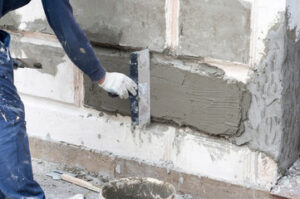Pressure Washing is a quick, effective way to remove tough stains from surfaces around your home or business. However, using a pressure washer without proper training or knowledge can damage surfaces.

Professionals know the right pressure settings for different surfaces and will use a nozzle with the correct spray pattern to avoid damaging your property. Visit Website to learn more.
Pressure washing is an effective cleaning method for outdoor surfaces, but the process depends on a number of factors. For example, the surface being cleaned and where you live will determine how much it costs to hire a professional who will use state-of-the-art tools to get the job done efficiently. A reputable service will provide upfront pricing to avoid any surprises down the road.
When choosing a professional, be sure to ask about their experience and the types of surfaces they have cleaned. Their expertise can help you decide whether to opt for soft washing or a standard high-pressure power wash. Also, inquire about their water usage and if they use detergents that are safe for the environment.
Dirt, mildew and grime can damage the exterior of your home or business if left unattended. Regular cleanings can prevent damage and prolong the life of your exterior surfaces. In addition, they will keep your property looking its best and boost the curb appeal of your home or business.
The costs of hiring a professional for pressure washing are often less expensive than the cost of repairing or replacing damaged exteriors. Moreover, a regularly maintained exterior is often more appealing to prospective buyers and can increase the appraised value of your property by 5-10%.
Getting your house or commercial property cleaned by a professional is also an excellent way to protect the investment you have made in your property. Mildew, dirt and moss can cause costly damage to your roof, windows, doors and other exterior features. Pressure washing removes these substances, making it easier to spot problems before they become major issues.
While DIY pressure washing is a convenient option, it is important to note that highly pressurized water can damage certain surfaces and even kill surrounding plants. It is crucial to use the proper psi, water rotation and cleaning products for your specific surface type. For instance, wood decks require a different pressure level than vinyl siding. Additionally, the type of nozzle you choose can significantly impact the pressure and reach of the spray.
Environmentally Friendly
Pressure washing, also known as power washing, uses highly pressurized water to clean a variety of outdoor surfaces. It’s an effective technique to remove loose dirt, mold, mildew, and debris from cars, some interior surfaces, and exterior areas such as siding, patios, decks, and driveways. When done incorrectly, however, this cleaning method can be damaging to surfaces and cause surface erosion. This is why it’s important to use a professional who has extensive experience with the equipment and knows how to properly operate it.
Using eco-friendly detergents is another key element of sustainable pressure washing. Traditional cleaning agents often contain harsh chemicals that can seep into local ecosystems and harm plants, animals, and aquatic life. But eco-friendly options are designed to break down safely in the environment, protecting wildlife and reducing the demand for natural resources. Additionally, sustainable practices such as blocking storm drains during washing or using absorbent materials to soak up excess runoff help keep local waterways free of contaminants.
When used in conjunction with proper surface preparation, eco-friendly pressure washing can reduce the need for harsh chemicals by removing most of the dirt and grime on a surface before starting to wash. In addition, minimizing water waste by using low-flow pumps or attachments that control water flow helps protect the environment.
Incorporating sustainable techniques like sweeping, rinsing, and hosing off unwashed areas can further minimize the need for chemical intervention. And utilizing electricity sourced from renewable energy sources reduces the carbon footprint of both the machine and the cleaning process.
Finally, using eco-friendly products extends the lifespan of exterior surfaces, reducing maintenance costs over time. In comparison to traditional solvents, green cleaning solutions use advanced chemistry that enables them to lift stains without damaging surfaces or causing environmental damage. Citric acid-based formulas effectively break down calcium deposits and water stains, while oxygenated cleaners rely on bubbling action to lift organic debris. These non-toxic products are safer for human health and work well in hard or soft water, with a rinse that leaves no film on surfaces. This makes them ideal for residential and commercial properties.
Reduces Damage
Various surface materials such as vinyl siding, wood, and certain concrete surfaces can be damaged by high pressure washing if not cleaned correctly. Professionals know the proper PSI settings, spray nozzle selection and distance between the nozzle and surface to prevent damage. They also use techniques that ensure dirt and grime is removed without harming surfaces or causing unnecessary wear.
The grime, mold, mildew, bird droppings and other materials that build up on buildings and outdoor items can cause serious damage if left unattended. These substances eat away at the material and can actually weaken the structure of the building or outdoor items such as patio furniture. Regular cleaning with a pressure washer helps reduce these risks and saves money on costly repairs in the future.
Another benefit of pressure washing is that it can remove stains like graffiti and spray paint, which can give a building an unprofessional look and turn off potential customers or tenants. These stains can be difficult to get rid of with traditional cleaning methods, but a good pressure wash can remove them quickly and easily, giving your building a fresh new appearance.
While a fresh coat of paint might seem to be a simple cosmetic upgrade, it can be very expensive. However, a pressure wash before the painting process can eliminate stains, dirt and debris that would otherwise be difficult to get rid of and make the job much more cost-effective.
Aside from its aesthetic benefits, regular cleaning with a pressure washer also cuts down on health risks. Dirt and grime provides a breeding ground for bacteria and vermin, which can then spread to the people living or working in the building. It also makes the building less hospitable to allergens like pollen, which can be especially dangerous for those suffering from allergies.
Lastly, a regular pressure wash helps cut down on deterioration of exterior building materials such as bricks. Over time, if not cleaned properly, moss, mold and tar can eat away at the materials, leading to costly replacements or structural damage. Regular cleanings can prevent this and save the business a significant amount of money in maintenance costs.
No Harmful Chemicals
When you choose eco friendly pressure washing chemicals, you can enjoy the benefits of cleaning your surfaces without risking damage to delicate materials or the environment. These chemicals are biodegradable and have minimal impact on the water supply, reducing the amount of pollution entering storm drains or harming aquatic life.
In addition, these cleaning chemicals are non-toxic, allowing you to use them around your home or office with ease and without fear of health risks. Choosing the right cleaning chemicals for your pressure washer is important, as some are best suited for particular surfaces or may require a certain amount of water pressure in order to remove stains effectively.
For example, oxalic acid is a nontoxic chemical that works well for removing mildew and other organic growth from outdoor surfaces. It also breaks down paint and dissolves carbon-based materials, including oils. Potassium Hydroxide is another nontoxic chemical that can be used to clean concrete, brick and other porous surfaces. It also works well as an alternative to harsh chlorine bleaches, which can be harmful for plants and other living organisms.
Using these chemicals in conjunction with your pressure washer allows you to clean a wide range of hardscapes and softscapes, from driveways to patios and decks. It can even dislodge stuck-on mud and dirt, and can help to extend the life of your exterior surfaces. However, it is important to check with your local waste management center or sanitation department for regulations on how to dispose of these chemicals safely and responsibly.
Cleaning your outdoor spaces with a professional power wash is a cost-effective and environmentally-friendly way to restore and protect your property. It eliminates stubborn stains and helps to prevent the formation of new ones, improving your curb appeal and protecting your investment. Plus, it can boost your property value by revealing the original beauty of your home’s exterior surfaces, which can attract potential buyers and increase your sale price.
Routinely scheduled maintenance is essential to keep your outdoor spaces looking their best and avoiding costly repairs. Using a professional power wash service that uses the proper settings and techniques for each surface will ensure that your property is cleaned thoroughly while still protecting it from damage.


